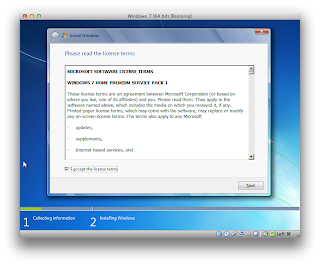Introduction
I've been developing and using my app Easy Calorie Counter (available for Windows and Mac) for about a year now and using it in conjunction with running and exercise to lose weight. You can see a screenshot of it below:I'm male, 34 years old, 5'8", and I brew my own beer which makes it particularly easy to go overboard on calories if I'm not careful.
In the Summer and Fall of 2012 I managed to lose 13 lbs, moving from 165 lbs. to 152 lbs, and have kept the weight off since then. I've learned a lot about what works so I'll be posting a series of tips for others who might be struggling.
Tracking your calories is the key. During my first cycle of P90X I actually gained weight, going from 162 to 165 over a period of three months. I was so hungry from all the extra exercise that I ate a lot of high calorie foods, and I didn't track what I ate.
You don't have to use Easy Calorie Counter for this to work, but it's only a few dollars and there's a free demo available here. You could even start tracking what you eat with pen and paper, that's what I did and what prompted me to write the app in the first place.
Tip #1 - Finding your target calorie level
Losing weight is all about math. The bottom line is that you have to burn more calories than you take in and your body will do the rest. Easy Calorie Counter has a built in calculator to help you find your target fat loss calorie level. Here's a screenshot:
Here you can see I've selected Lightly Active. I work at a computer all day but I exercise every day of the week, which would probably make me Moderately Active.
I think that this calculator, which uses either of two respected formulas for calculating fat loss calories, gives results that are a bit on the high side. My sweet spot seems to be 1600 calories per day. With that amount I tend to lose a little bit more than 1 pound per week. But everyone is different, and a computer can never give a perfect number for something like this, so here is how to find your real fat loss calorie level:
- Run the calculator to get an estimate of your fat loss calories
- Weigh yourself on an empty stomach (try it right after you wake up and use the bathroom)
- Use a calorie calculator to eat as close to your target calories as you can for 1 week
- At the end of the week, weigh yourself again on an empty stomach. Did you:
- Maintain your weight? Consume 500 fewer calories per day and repeat step one
- Gain weight? Consume 500 fewer calories per day and repeat step one
- Lose 1-2 pounds? Perfect! Maintain to reach your target weight!
- Lose 3 or more pounds? Consume 300 more calories per day and repeat step one*
*People who are heavier are likely to lose 3+ pounds per week, which is ok
Repeat those steps until you find your real number for fat loss calories that causes you to lose 1-2 pounds per week. It might take a few weeks, it took me 2 or 3, but once you know that number you'll be armed with all the information you need to really lose weight and keep it off.
In the next installment I'm going to show some examples of ways to shave off calories without being hungry all the time. There are some nice substitutions you can make in your diet that make it easy. You might even still have room for a beer if you're careful!



